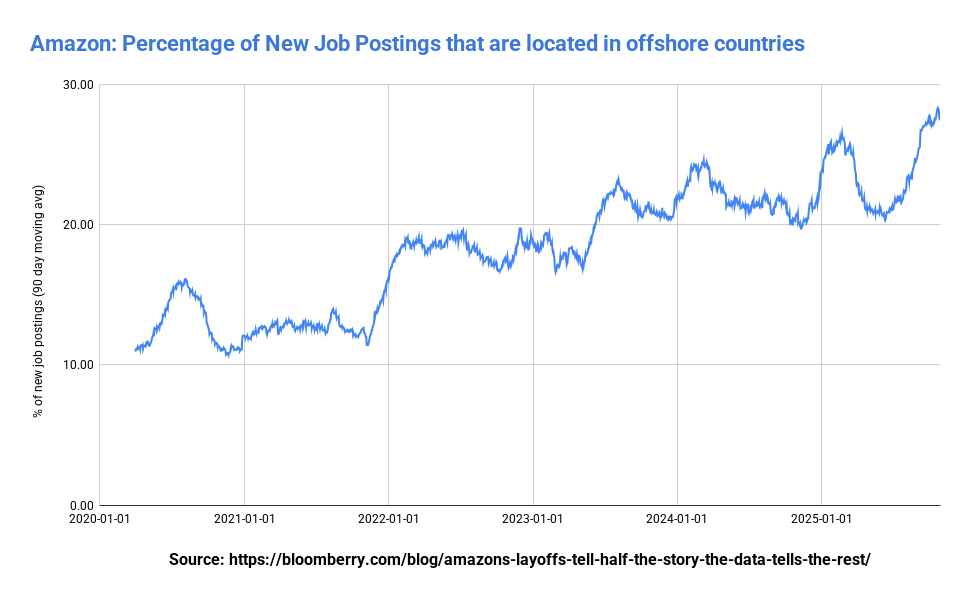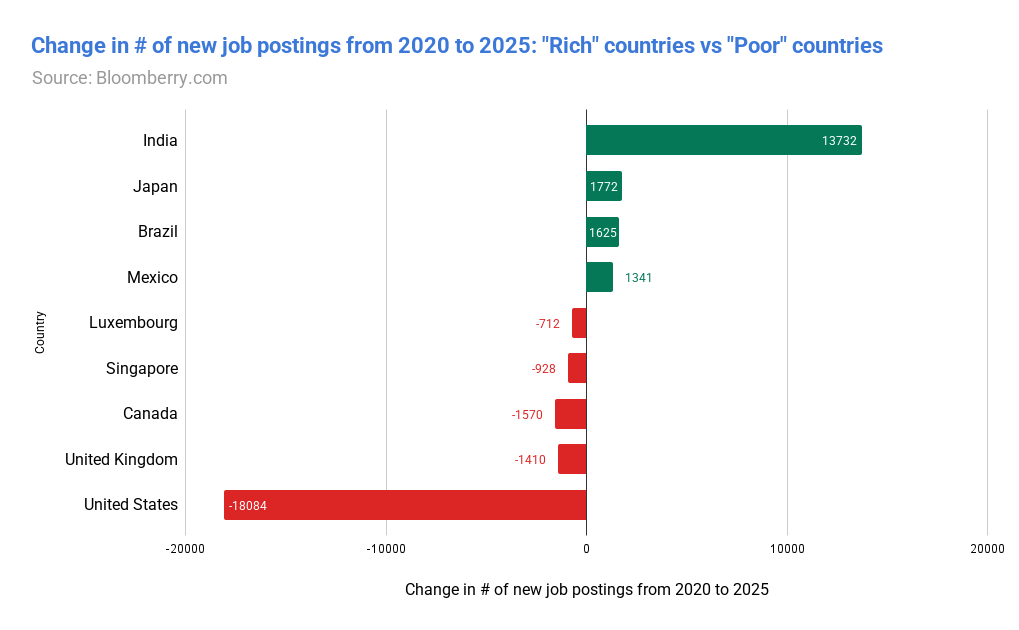Last Updated: November 2, 2025
Amazon announced 14,000 corporate job cuts today. The official reason? “Reducing bureaucracy, removing layers,” and freeing up resources for AI.
But here’s what the press releases didn’t mention:

What the Job Posting Data Actually Shows
I got curious about what was really happening beneath the layoff headlines, so I pulled every Amazon job posting since 2020 (provided by Revealera, a company that provides historical jobs data)and started digging. I wanted to see where Amazon was actually hiring over time.
I defined a list of what I’d call “non-offshored” countries – basically the “expensive” places where Amazon might hire corporate talent:
non_offshored_countries = [
'United States', 'Canada', 'United Kingdom', 'Germany',
'France', 'Netherlands', 'Switzerland', 'Australia',
'Singapore', 'Israel', 'Austria', 'Belgium', 'Denmark',
'Finland', 'Ireland', 'Italy', 'Luxembourg', 'Norway',
'Spain', 'Sweden', 'China', 'Japan'
]
Then I tracked what percentage of Amazon’s job postings had its location specified outside this list – places like India, Eastern Europe, Asia and Latin America where labor costs are significantly lower.
My Findings
Back in early 2020, about 11% of Amazon’s job postings were in offshore locations. Nothing unusual there.
But then something shifted. The percentage started climbing during the pandemic hiring boom and just… kept going. By 2023, it had hit 20%. Today? Nearly 28%.
Amazon has more than doubled the share of jobs that they plan to hire offshore in just five years. The % of job postings that are in offshored countries has increased 154% since 2020, to be exact (2.5x)
Most of the growth is in India, Mexico, Brazil
If we compare the countries where Amazon had the biggest growth in job postings in 2025 compared to 2020, it would be India, Mexico, Brazil, and Japan (Japan being the only “rich” country with non-trivial growth). On the other hand, the countries with the biggest declines in job postings in 2025 would be: the US, UK, Canada, Singapore and Luxembourg – all consider relatively “rich” countries.

Could you argue that Amazon is simply boosting hiring in a country where they’re still developing (in India)? Perhaps, but Amazon has been in the Indian market since 2013. And Brazil (operating since 2012) and Mexico (since 2015) show the same pattern. These aren’t new markets; they’re established ones that suddenly became hiring hubs right as US postings declined. Japan has been the only exception.
It Might Be Due to AI (Actually, Indians…)
The memo talks about “shifting resources to ensure we’re investing in our biggest bets.” One of those bets might be replacing a developer in Seattle with someone in Bangalore. And while I acknowledge it’s almost impossible to prove that… even if it’s not 1:1 replacement, Amazon is shifting where it allocates headcount. Whether that’s “replacement” or “strategic reallocation” is something you can argue about.
For anyone that wants to dig into the data, I open-sourced all the job postings posted by Amazon since 2020 here




